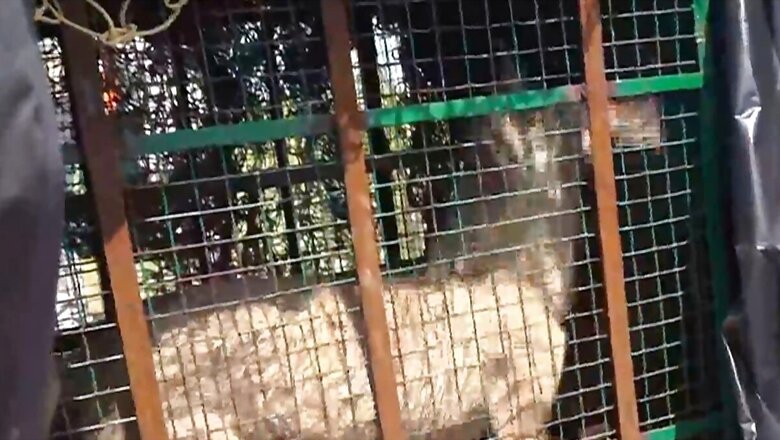Why Are Wolves in Bahraich Turning Man-Eaters? Experts Point to 'Revenge Tendency' & Loss of Habitat

views
In Mahsi tehsil of Uttar Pradesh’s Bahraich district, a pack of wolves has preyed upon 10 people, including nine children, in the last 50 days, raising urgent questions about what has driven the animals to become a threat to human life.
A global study by the Norwegian Institute for Nature Research from 2002-2020 considers the risk of wolf attacks to be “above zero, but far too low to calculate”. The study showed only 26 fatal wolf attacks on humans took place around the world during the time period. Of these, four were in India.
So, what went wrong with the wolves of Bahraich?
Of the many conjectures, the one that seems to be doing the rounds the most is the revenge theory. “We should first understand that wolves don’t live in forests; they’re social animals and have been living in human habitats for centuries. They depend on humans for their food, be it preying upon their pets like goats, rabbits, and rodents or feeding on the carcasses of dead animals. Now, the question is what made the wolves of Bahraich man-eaters? On the basis of my over-three-decade experience being a forester, I believe that wolves are one of the most intelligent animals and what makes them different and even more terrorising than other carnivores is their tendency to take revenge. It may sound a little weird but it’s true,” said Sanjay Pathak, an IFS officer, senior forester and former director of Dudhwa National Park.
Pathak recalled two significant periods in Uttar Pradesh’s history marked by wolf attacks on children — first in the mid-1990s and then in 2003. The first incident occurred in 1996 in Pratapgarh, where wolves attacked nearly 12 children. It was later discovered that farmers, while working in a field near a river, found a litter of wolf pups in a shallow cave. Fearing the wolves, they threw the pups into a fire, which enraged the wolves, leading them to attack children in nearby villages. A similar incident was reported in 2003 in Balrampur district where wolves targeted children after their habitat was destroyed by farmers.
“These actions provoked the wolves, leading to tragic consequences for the children in the affected areas,” Pathak explained, highlighting the deadly repercussions of human interference with wildlife.
Other than Pathak, a few foresters believe the loss of habitat and fondness for human flesh may have turned the wolves into man-eaters.
“Wolves are not typically known for attacking humans, even though they have coexisted with us in the same territories for centuries. However, these attacks may occur when a wolf accidentally preys upon a child. Once a wolf tastes human flesh, particularly that of a child, it may develop a preference for it. The soft flesh of children and their vulnerability make them easier prey compared to other animals, which could lead a wolf to become a man-eater,” said Ajeet Pratap Singh, divisional forest officer (DFO), Bahraich, who is heading ‘Operation Bhediya’ to catch the stray wolves.
In Uttar Pradesh, there are less than 100 wolves, while the pan-India numbers are less than 3,000. The highest concentration of wolves is found in Madhya Pradesh, Rajasthan, Gujarat, Maharashtra, and Chhattisgarh. Wolves are listed as Schedule 1 species in India’s Wildlife Protection Act of 1972, which gives them the highest level of protection.
Meanwhile, a few foresters pointed out that the leaders of the pack, who are generally assigned the responsibility to hunt, are yet to be nabbed and hence, the attacks are still on.
“Wolves live in a pack where the leaders are the parents and only they hunt. So, the killing won’t end until the attacking couple is identified and caged. The possibility is that the three-four wolves captured till date were not the ones attacking,” said a senior forest official.
On August 29, the forest department managed to trap one of the killer wolves, taking the total number of trapped wolves to four. However, two man-eater wolves are still on the prowl.
The UP forest department and district administration have deployed more than 250 staffers, including 150 forest officials and installed four traps apart from using three sets of thermal drone cameras to track the remaining wolves. The man-eater wolves have been giving sleepless nights to more than 50,000 people residing in as many as 25-30 villages in the Hardi area of Bahraich’s Mahsi tehsil.
Uttar Pradesh Chief Minister Yogi Adityanath has issued an urgent advisory, directing authorities to take all necessary measures to capture the man-eater wolves.



















Comments
0 comment